Flat towing a Jeep Wrangler with a manual transmission is a popular and safe method for RV travel when properly equipped and prepared. This guide provides a comprehensive overview of the process, ensuring a secure and enjoyable experience.
What is Flat Towing?
Flat towing, also known as dinghy towing, is a method of towing a vehicle with all four wheels on the ground. It involves connecting the vehicle to an RV or another larger vehicle using a tow bar and other specialized equipment. This technique is particularly popular for towing Jeep Wranglers, especially manual transmission models, due to their durability and simplicity. Flat towing allows the Jeep to be towed without a trailer, making it a convenient option for RV travelers. Proper setup and equipment are essential to ensure safe and damage-free towing.
Why Flat Tow a Jeep Wrangler?
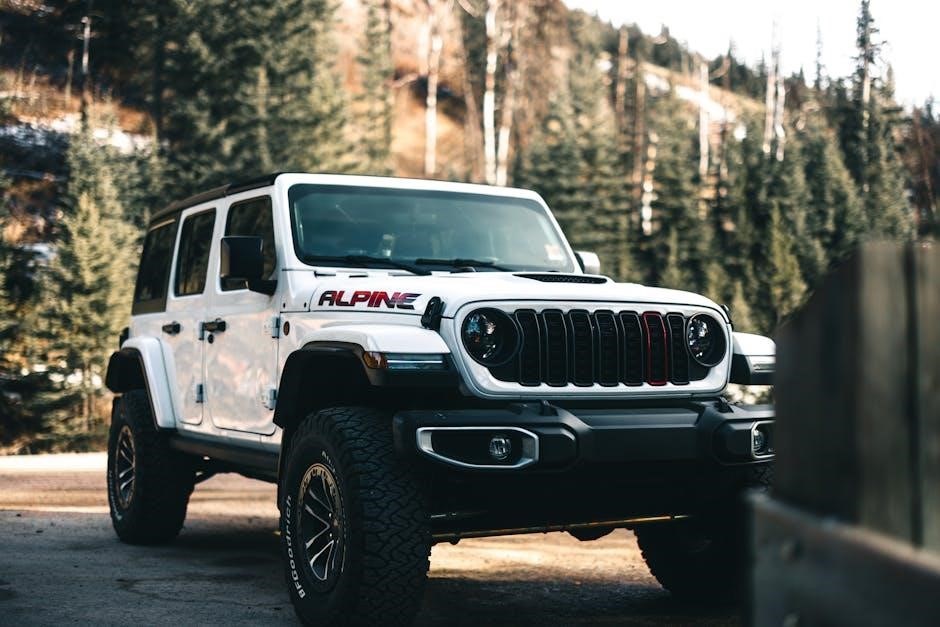
Flat towing a Jeep Wrangler, particularly with a manual transmission, is a popular choice for RV travelers due to its simplicity and convenience. Unlike automatic vehicles, manual transmissions do not require complex procedures to prevent damage during towing. The Jeep Wrangler’s rugged design and lightweight construction make it an ideal candidate for flat towing. Additionally, flat towing eliminates the need for a trailer, saving space and reducing overall weight. This method is cost-effective, versatile, and offers a practical solution for adventurers seeking to bring their Jeep along on long journeys without compromising performance or safety.
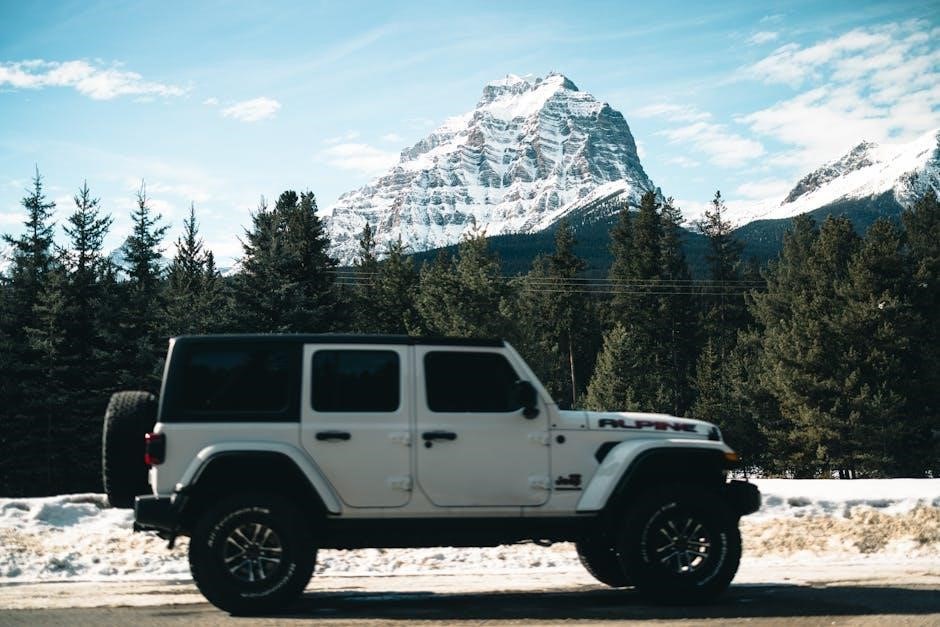
Vehicle Preparation
Ensure the manual transmission is in gear, not neutral, transfer case in neutral, and properly secure the steering wheel and ignition for safe towing.
Checking the Owner’s Manual
Consulting the owner’s manual is essential to ensure compliance with Jeep’s specific flat-towing requirements for manual transmissions. Important steps include depressing the brake pedal, shifting into neutral, and turning off the engine. The transfer case must be in neutral, and the parking brake should be disengaged. Key notes from the manual emphasize that the transmission should not remain in neutral during towing to prevent damage. Always verify the recommended towing speed and equipment specifications to guarantee a safe and hassle-free experience.
Necessary Modifications for Flat Towing
To prepare your Jeep Wrangler for flat towing, certain modifications are required. Base plates must be installed to securely attach the tow bar, ensuring proper weight distribution. An auxiliary braking system is also essential to maintain control during towing. Additionally, wiring harnesses and lighting adapters are needed to connect your Jeep’s electrical systems to the RV. These modifications not only enhance safety but also ensure compliance with legal requirements. Always consult a professional to ensure all installations meet the manufacturer’s specifications and towing standards. Proper preparation is key to a safe and enjoyable towing experience.
Equipment Needed
Flat towing a manual transmission Jeep Wrangler requires specific gear, including a sturdy tow bar, base plates, and an auxiliary braking system. Proper equipment ensures safety and control.

Tow Bar and Mounting
The tow bar is a critical component for flat towing, securely connecting your Jeep Wrangler to the RV. It must be sturdy, durable, and specifically designed for your vehicle’s weight. Proper mounting ensures stability and control while towing. A frame-mounted tow bar is recommended for its strength and reliability. Additionally, consider an adjustable tow bar to accommodate varying heights between the Jeep and RV. Brands like Blue Ox offer reliable options for Jeep Wrangler flat towing. Always follow the manufacturer’s instructions for installation and ensure the tow bar is rated for your vehicle’s weight. Improper mounting can lead to damage or loss of control. For complex setups, consult a professional to ensure everything is securely attached and functioning properly. Regular inspections of the tow bar and mounting hardware are essential for safe towing experiences. Adhere to the manufacturer’s guidelines to maintain safety and reliability during your journey.

Base Plates and Adapter Kits
Base plates are essential for flat towing, as they attach directly to the Jeep Wrangler’s frame, providing a secure mounting point for the tow bar. They must be specifically designed for your Jeep’s make and model to ensure proper fitment and safety. Adapter kits may be required to connect the tow bar to the base plates, depending on the compatibility of the components. High-quality steel base plates are recommended for durability and strength. Always ensure the base plates and adapter kits are rated for your vehicle’s weight and towing capacity. Proper installation is critical to prevent damage or detachment during towing.
Wiring and Lighting Setup
Proper wiring and lighting setup is crucial for safe flat towing. The Jeep Wrangler must have its brake lights, turn signals, and taillights synchronized with the RV. A wiring harness or tow package specifically designed for your Jeep is required to connect its electrical system to the RV. Magnetic tow lights are a temporary solution, while a permanent installation involves connecting the Jeep’s wiring to the RV’s electrical system. Always test the lights before towing to ensure they function correctly. Proper wiring ensures legal compliance and enhances safety on the road.
Auxiliary Braking System
An auxiliary braking system is essential for flat towing a Jeep Wrangler. This system supplements the RV’s brakes by applying the Jeep’s brakes proportionally during deceleration. Portable options like the Roadmaster Even Brake or Blue Ox Patriot are popular choices, as they can be transferred between vehicles. Some systems are entirely automatic, while others require manual adjustment. Proper installation ensures smooth braking, reduces wear on the RV’s brakes, and enhances overall safety. Many states legally require an auxiliary braking system for flat towing, making it a critical component for compliance and safe towing practices.
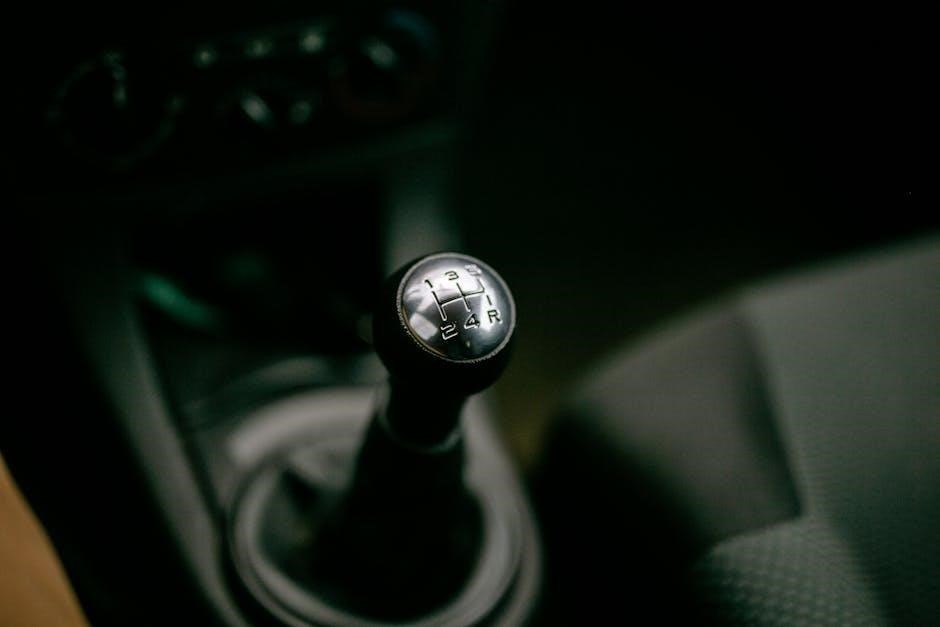
Flat Towing Process
Flat towing involves carefully connecting and hauling your Jeep Wrangler behind an RV. Ensure proper setup, use a reliable tow bar, and follow step-by-step towing instructions for safety and efficiency.
Before flat towing your Jeep Wrangler, ensure all components are properly secured. Check the tow bar, base plates, and wiring connections for stability. Verify that the transfer case is in neutral and the manual transmission is in gear. Test the braking system and lighting to ensure synchronization with the RV. Double-check the owner’s manual for specific instructions and confirm that all safety measures are in place. Conduct a final walk-around inspection to ensure everything is secure and ready for towing. This thorough preparation ensures a safe and stress-free towing experience. To flat tow your Jeep Wrangler with a manual transmission, start by ensuring the vehicle is properly prepared. First, attach the tow bar to the Jeep’s base plates and secure it firmly. Next, shift the manual transmission into neutral and ensure the parking brake is off. Then, place the transfer case in neutral to prevent drivetrain damage. Connect the wiring harness to synchronize the Jeep’s lights with the RV’s signals. Finally, hook up the auxiliary braking system and perform a final safety check to ensure all components are secure and functioning properly before towing. After reaching your destination, ensure the Jeep Wrangler is properly disconnected from the RV. Turn off the engine, engage the parking brake, and shift the manual transmission into first gear to prevent rolling. Disconnect the auxiliary braking system and wiring harness to avoid electrical issues. Finally, perform a quick inspection to ensure all components are secure and functioning correctly. This careful process ensures safety and prevents potential damage to the vehicle. Always double-check that the transfer case is in the correct position and the brakes are fully operational before leaving the Jeep unattended. Ensure all safety measures are in place, including proper braking systems and secure connections, and comply with local towing regulations to avoid legal issues. Always ensure the Jeep Wrangler is properly prepared for flat towing, with the manual transmission in gear and the transfer case in neutral. Use an auxiliary braking system to maintain control during towing; Regularly inspect the tow bar, base plates, and wiring connections for damage or wear; Never exceed legal speed limits when towing, and keep a safe distance from other vehicles. Ensure the braking system is synchronized between the Jeep and the RV to prevent accidents. Always follow the manufacturer’s guidelines for flat towing to avoid potential damage to the vehicle. Safety should never be compromised. Flat towing a Jeep Wrangler requires adherence to specific legal regulations to ensure safety and compliance. Always check local and state laws regarding flat towing, as requirements can vary. Auxiliary braking systems are mandatory in many states to maintain control during towing. Ensure the Jeep’s license plate is visible and properly illuminated. Some states may require additional lighting or reflective devices. Verify that your tow setup meets all legal standards for weight distribution and braking systems. Failure to comply with legal requirements can result in fines or penalties. Stay informed about regional regulations to avoid legal complications during your journey. Common issues during flat towing include transmission damage concerns and brake system malfunctions. Always refer to the owner’s manual for proper towing procedures. Improper flat towing of a Jeep Wrangler with a manual transmission can lead to transmission damage. Always follow the owner’s manual guidelines to avoid harm. Ensure the vehicle is properly prepared, with the transmission in neutral and the parking brake disengaged. Leaving the transmission in neutral during towing can cause mechanical stress. Additionally, never tow with the clutch partially engaged, as this can overheat and damage the clutch and gearbox. If unsure, consult a professional or the manufacturer’s recommendations to prevent costly repairs and ensure safe towing. Proper preparation is key to protecting your Jeep’s transmission during flat towing. Brake system malfunctions are a critical concern when flat towing a Jeep Wrangler. Improperly configured brakes can lead to loss of control during towing. Always ensure the auxiliary braking system is installed and functioning correctly to prevent damage. Overheating brakes can occur if the system is not calibrated properly, leading to potential failure. Regular maintenance of the brake system is essential before and after towing. Test the brakes thoroughly before each trip to ensure reliability. Addressing any issues promptly will help maintain safety on the road and prevent costly repairs to your Jeep Wrangler. Proper brake setup is vital for safe flat towing. Flat towing a Jeep Wrangler with a manual transmission is a practical and efficient way to travel with your RV. Proper setup, including a tow bar, base plates, and auxiliary braking system, is essential for safety and reliability. Always follow the manufacturer’s guidelines and ensure your vehicle is prepared for towing. Regular maintenance and pre-tow checks will help prevent issues on the road. With the right equipment and knowledge, flat towing your Jeep Wrangler can be a seamless and enjoyable experience. Stay informed, follow safety protocols, and enjoy your adventures with confidence.Pre-Tow Checklist
Step-by-Step Towing Instructions
Post-Tow Procedures
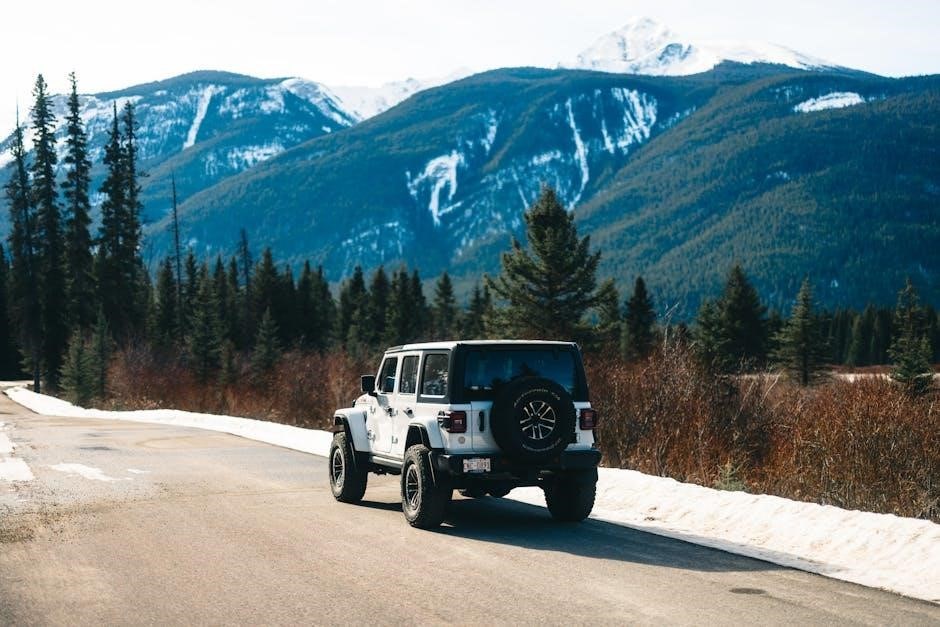
Safety and Legal Considerations
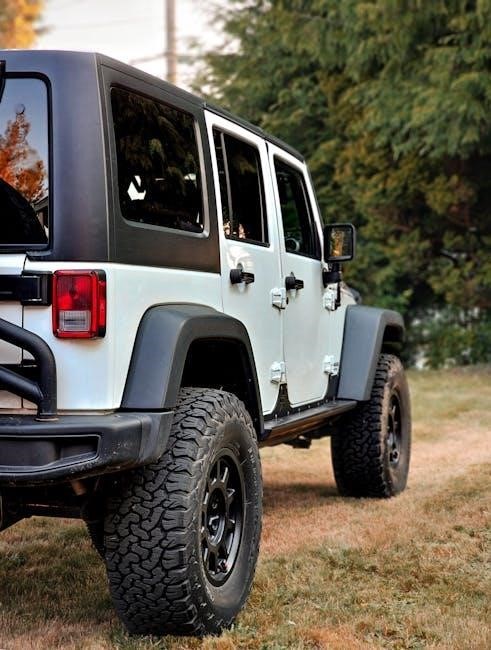
General Safety Tips
Legal Requirements for Flat Towing
Troubleshooting Common Issues
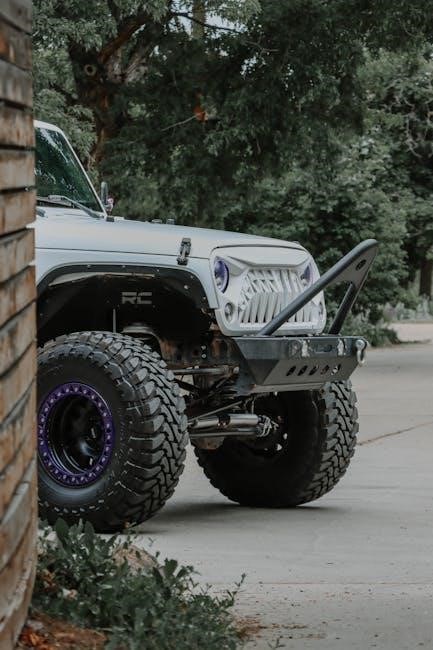
Transmission Damage Concerns
Brake System Malfunctions
